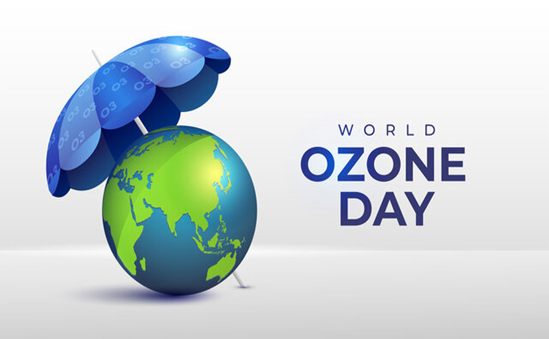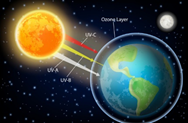International Day for the Preservation of the Ozone Layer
- Posted By
10Pointer
- Categories
Environment
- Published
19th Sep, 2022
-
Context
Recently, India organised a programme to observe the 28th World Ozone Day.

What is World Ozone Day?
- World Ozone Day is celebrated on 16th September each year to commemorate the signing of the Montreal Protocol that came into force on this day in
Significant development
- According to the UN, the Montreal Protocol has led to the phase-out of 99% of ozone-depleting chemicals in refrigerators, air-conditioners and many other products.
- Ozone layer protection efforts have also contributed to the fight against climate change by averting an estimated 135 billion tonnes of carbon dioxide equivalent emissions, from 1990 to 2010.
- Part of the ozone layer has recovered at a rate of 1-3% per decade since 2000, and it is expected to return to pre-1980 levels by 2050.
|
- In December, 1994, the United Nations General Assembly- UNGA proclaimed September 16 as World Ozone Day.
- It is celebrated every year to spread awareness among people about the depletion of Ozone Layer and the measures taken and to be taken to preserve it.
|
Theme 2022: “Montreal Protocol@35: global cooperation protecting life on earth”
|
About Ozone Layer
- The ozone layer is a fragile shield of gas.
- Ozone occurs naturally in the Earth's upper atmosphere (Stratosphere).
- It protects the Earth from the harmful portion of the rays of the sun, thus helping preserve life on the planet.

|
Good Ozone
|
Bad Ozone
|
- Ozone in the Earth's upper atmosphere shields earth from the sun's harmful ultraviolet rays.
- This “good” ozone is gradually being destroyed by man-made chemicals referred to as Ozone-Depleting Substances (ODS), including
- chlorofluorocarbons (CFCs)
- hydrochlorofluorocarbons (HCFCs)
- halons
- methyl bromide, carbon tetrachloride
- methyl chloroform
|
- In the Earth's lower atmosphere (troposphere) near ground level, ozone is formed when pollutants emitted by cars, power plants, industrial boilers, refineries, chemical plants, and other sources react chemically in the presence of sunlight.
- Surface level ozone is a harmful air pollutant.
|
Global Conventions to Protect Ozone Layers
- The Vienna Convention called the Convention for the protection of the Ozone layer, came into force in 1988 and was universally ratified by 2009. It prompted the international community to establish a mechanism for cooperation to take action to protect the ozone layer.
- Montreal Protocol – Its purpose is to regulate the production, consumption, and emissions of ozone-depleting substances (ODSs).
- The most recent amendment, the Kigali Amendment, called for the phase-down of hydrofluorocarbons (HFCs) in 2016.
- Kigali Agreement – It is the 8th amendment made to Montreal Protocol. 197 member countries signed the agreement for this amendment.

